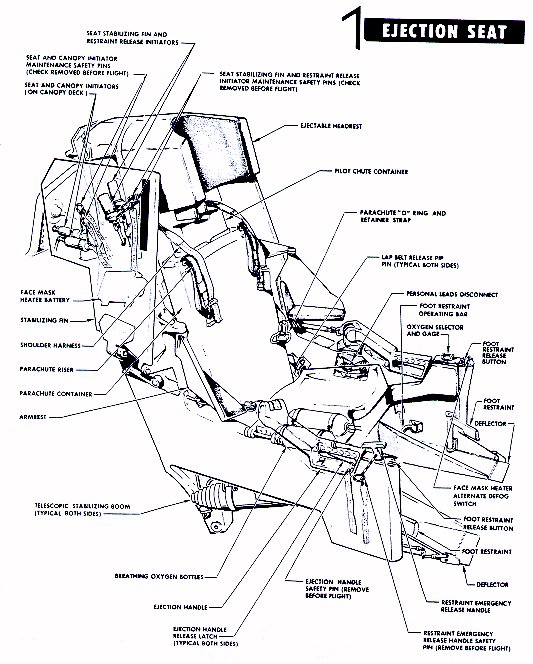
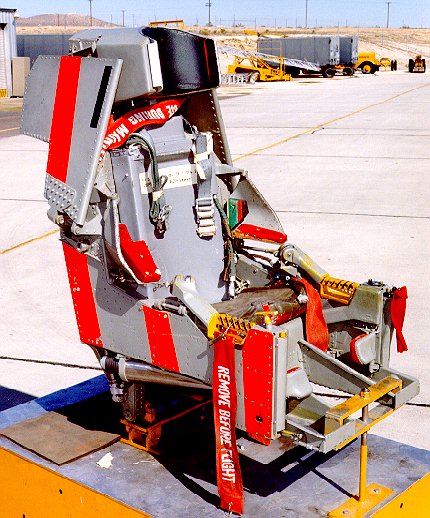
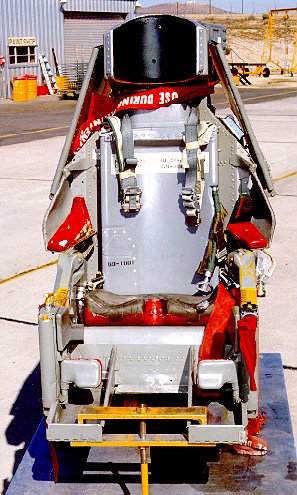
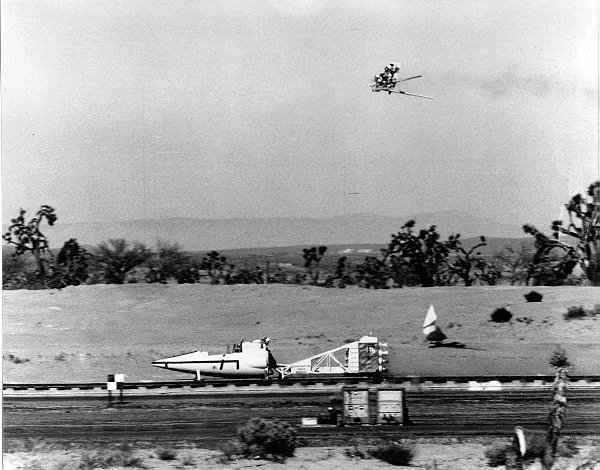
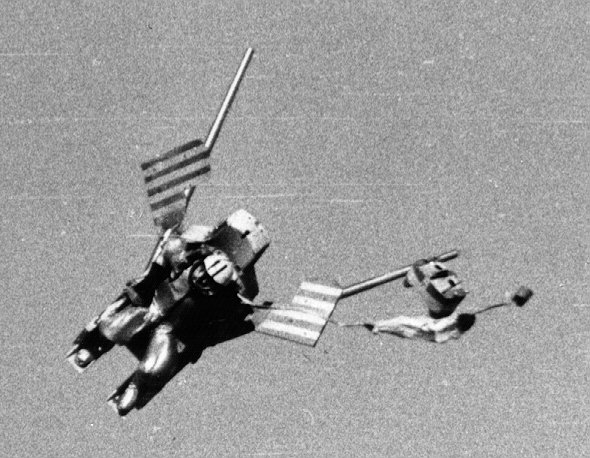
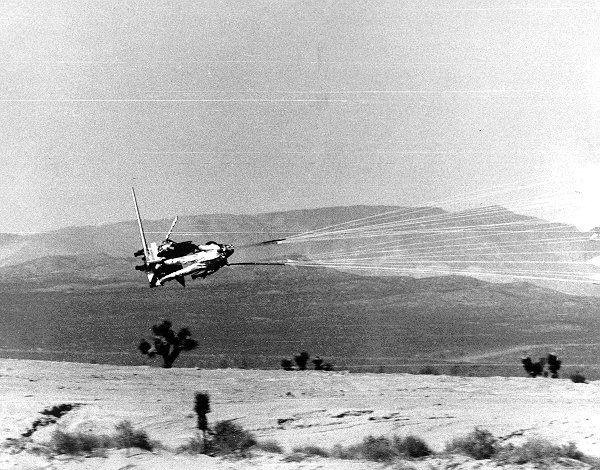
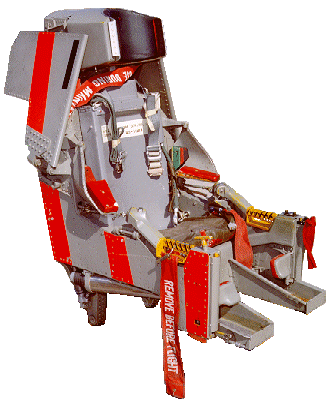 North American Aviation was chosen to design and build
the X-15 research aircraft. The X-15 was designed to fly at speeds exceeding
Mach 5, and altitudes of up to 800,000 feet (although it maxed out in testing
at 347,000 feet). Design discussions were held on the merits of a capsule
versus a seat design, and with Scott Crossfield's input, the seat design was
chosen. The picture on this page shows the result. The NAA
X-15 seat was possibly the most elaborate
ejection seat ever designed. Its features included a pair of wings and a pair
of telescoping booms to stabilize the seat at speeds of Mach 4.0 and an
altitude of 120,000 feet. The seat pan included two large capacity Oxygen
cylinders. The foot rests included a set of ankle restraints (shown locked)
that were activated by the pilot bringing his feet back to the foot rests.
His ankles would strike a set of bars which would lock in the shackles, and
by linkage raise a set of deflectors in front of the toes. Raising the
ejection handles raised a set of thigh restraints as well as rotating inward
the elbow restraints. This action also pulls a pin out of the emergency
oxygen supply system activating it. This configuration protected the pilot from the
wind blast (the wind forces experienced on ejecting at high Mach are many
times the wind force in a large hurricane! {a catagory 5 Hurricane is one
with wind speeds in excess of 135 kts., at Mach 2.5 and 56,000 feet the
equivilent is 480+ KEAS}).
North American Aviation was chosen to design and build
the X-15 research aircraft. The X-15 was designed to fly at speeds exceeding
Mach 5, and altitudes of up to 800,000 feet (although it maxed out in testing
at 347,000 feet). Design discussions were held on the merits of a capsule
versus a seat design, and with Scott Crossfield's input, the seat design was
chosen. The picture on this page shows the result. The NAA
X-15 seat was possibly the most elaborate
ejection seat ever designed. Its features included a pair of wings and a pair
of telescoping booms to stabilize the seat at speeds of Mach 4.0 and an
altitude of 120,000 feet. The seat pan included two large capacity Oxygen
cylinders. The foot rests included a set of ankle restraints (shown locked)
that were activated by the pilot bringing his feet back to the foot rests.
His ankles would strike a set of bars which would lock in the shackles, and
by linkage raise a set of deflectors in front of the toes. Raising the
ejection handles raised a set of thigh restraints as well as rotating inward
the elbow restraints. This action also pulls a pin out of the emergency
oxygen supply system activating it. This configuration protected the pilot from the
wind blast (the wind forces experienced on ejecting at high Mach are many
times the wind force in a large hurricane! {a catagory 5 Hurricane is one
with wind speeds in excess of 135 kts., at Mach 2.5 and 56,000 feet the
equivilent is 480+ KEAS}).
The canopy was automatically jettisoned as the ejection handles reached within 15 degrees of full travel. The seat was inhibited from firing with the canopy in place, but if the handles were raised and locked into the firing position, the seat would remain armed and extremely dangerous as it would immediately fire if the canopy were to jettison. Hence, the ground rescue personel were strongly cautioned to check through the cockpit windows for the condition of the seat handles in case of the need to jettison the canopy to rescue the pilot. There was an external handle aft of the right side of the cockpit which could cut the catapult initiator line to prevent such an undesired firing.
Upon canopy jettison, the seat would fire. As it left the aircraft, the wings would fold down and cartridges would fire to extend the telescoping booms out behind the seat. A face heat battery is activated to keep the pilot's visor clear of ice that would prevent him from determining a safe altitude to initiate manual seat seperation (in case of a failure of the automatic seperation system). Seat separation is delayed by an aneroid device until the seat is below 15,000 feet. If the seat is fired lower than that, there was a fixed 3 second delay prior to seat separation. Three initiators fire to jettison the headrest, release the seat belt, personel leads (located as a quick disconnect in the left side of the seat bucket), ejection handles, and all restraints. There is a manual handle to fire these initiators in case of an aneroid failure.
Thanks to Tony Landis and NASA for providing the pictures and diagrams on this page.
| The Ejection Site Home | |
|---|---|
| Send email to Kevin |